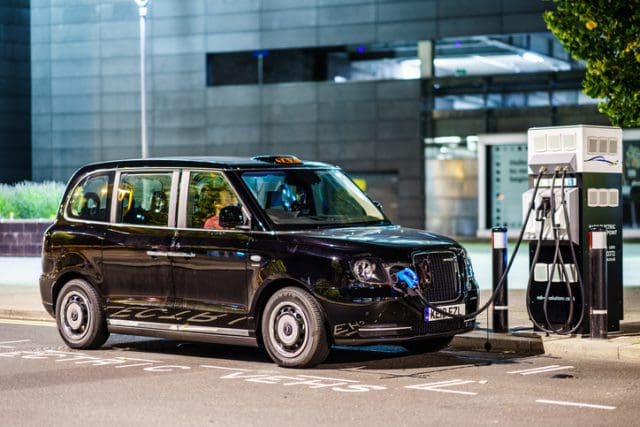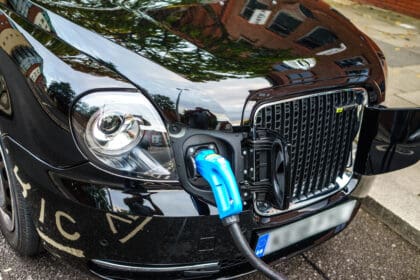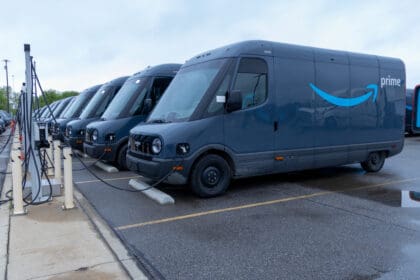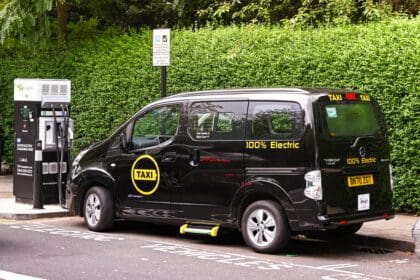Taxi drivers have been encouraged to switch to EVs with the promise of greener, cheaper motoring. The ride so far has been a bumpy one, but there are signs the road ahead is starting to look clearer.
Taxi drivers were identified as playing a key part in our drive towards cutting pollution and Net Zero Carbon because they are on the road every day. They operate in the busiest and most polluted areas and getting them to switch to electric vehicles cuts pollution and offers a safe and sustainable way of getting around our busy streets.
EV challenge
Like other motorists, taxi drivers have faced two obstacles to switching to EVs. The first is the higher initial cost. It is new technology that is constantly evolving and, until recently, there was no second-hand market to speak of. They have been more expensive to buy and more expensive when it comes to taxi insurance, which has understandably made drivers cautious about making the switch.
The second challenge has been the range of the vehicles and the number of fast-charging points. Taxi drivers need to be flexible and know that whether their next fare is a mile or 200 miles, they can do it with no more fuss or cost than filling up at a petrol station. The prospect of paying more for a vehicle that can’t compete with their current petrol or diesel taxi isn’t an appealing one.
Green drive
In order to get taxi drivers in this key role to make the switch, they have to be assured that their new EV will do what they need it to, and that they can afford it.
Taxi and PHV drivers currently using petrol and diesel cars know what’s left in the tank will get them where they need to go – or at least to the nearest petrol station. But there has understandably been a lot of uncertainty over the range of EVs, including how much charge is lost through using the heating or A/C, connecting to smartphones and taxi apps, as well as carrying extra passengers and their luggage.
This cautious approach means that taxi drivers will only make the switch when it is right for them. And it might be a case of timing, rather than struggling to find a suitable EV. If they have only recently bought their current petrol or diesel car, it makes sense to stick to their current budget and business plan and look again when it comes time to replace it.
Support
This is why the Licensed Taxi Drivers’ Association is understandably concerned about the end of the Government’s Plug-in Taxi Grant, which is currently due to end on April 5.
The scheme offers a £7,500 discount on the price of a new plug-in hybrid electric LEVC TX taxi which, bought on finance, would set a cabbie back as much as £110,000 – £7,000 more than the starting price of a new Range Rover.
LTDA general secretary Steve McNamara said it is “essential” the grant continues.
Mr McNamara told The Standard scrapping the scheme would be “absolutely disastrous because taxi drivers thinking of buying a new vehicle will try to hang on to old vehicles”.
This could mean having to pay £30 a day in congestion and ULEZ charges might make more financial sense than investing in an EV black cab.
Current climate
In the first half of 2023, 16% of all new cars sold were electric. Only 11 car makers exceeded the 22% target for EV sales.
Sue Robinson, chief executive of the National Franchised Dealers Association, told Fleet News: “Whilst the ZEV mandate is certainly a step in the right direction, the Government needs to offer more attractive price incentives and look to improve EV charging infrastructure across the country to increase consumer confidence in electric and help drive the country towards its net-zero commitments.”
But there is good news in the used EV market. The Electric Car Scheme reports that used EV numbers have increased by 174% year-on-year and used EVs are being sold at the same rate – 28 days – as petrol and diesel cars.
It puts this down to the end of finance and leasing terms of new electric cars purchased three to five years ago – the typical leasing period.
The good news is EV ranges are constantly improving, more ultra-fast charging points are being created and there is a good-quality used EV fleet coming through which helps keep costs down.
Taxi drivers must still decide which is the right vehicle for them, but they are now getting much more choice when it comes to affordable greener motoring.




